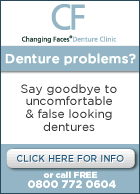Cosmetic Dental Procedures Overused says Dental Expert

Cosmetic dental procedures such as porcelain crowns and veneers are becoming too popular and may be given to patients who don’t necessarily need them.
That is the opinion expressed by Martin Kelleher, a dental consultant who specialises in restorative dentistry.
His recent article which appeared in the July edition of Faculty Dental Journal (FDJ), Porcelain Pornography, has stated his distress over the use of aesthetically pleasing dental treatments such as veneers and crowns, which he says are unnecessary, expensive and aggressive restorative treatments that patients with minor cosmetic issues do not require.
As well as being unnecessary, Kelleher has also stated that patients could suffer in the long-term as a consequence of these new additions.
To prepare a tooth for these procedures, enamel and other parts of the tooth structure are removed to make space, between 3% and 30% for ceramic veneers depending on the level of treatment, and between 62% and 73% for ceramic crowns.
It should be stressed that Mr Kelleher’s article suggests that he finds it unjustifiable to remove tooth structure for minor cosmetic problems and does not state that such treatments are totally unacceptable for those with severe cosmetic problems.
“Porcelain veneers have their place in responsible restorative dentistry when provided by suitably trained and qualified individuals but I believe that other safe and prove cosmetic treatments, like bleaching and bonding, should be considered before the destructive ones,” stated Martin Kelleher. “Patients must understand that extensive porcelain veneers or crown treatment is not a risk free shortcut to a perfect smile.”
Porcelain veneers and crowns have been linked to degrading over time and 50% of all veneers are no longer useable or require further treatment after 10 years. One of the overall aims of Mr Martin Kelleher’s report is to urge dental experts to recommend the option that will prove the best choice for the patient’s dental health.
Join this Discussion









